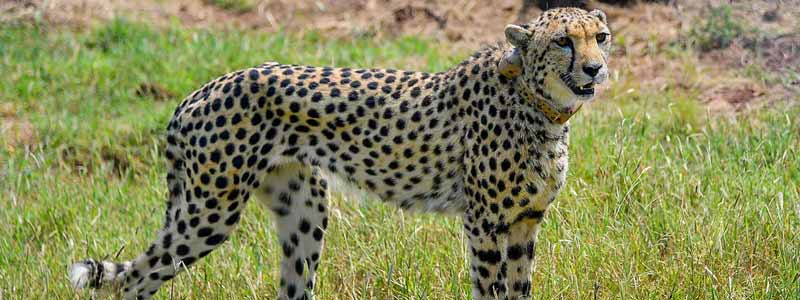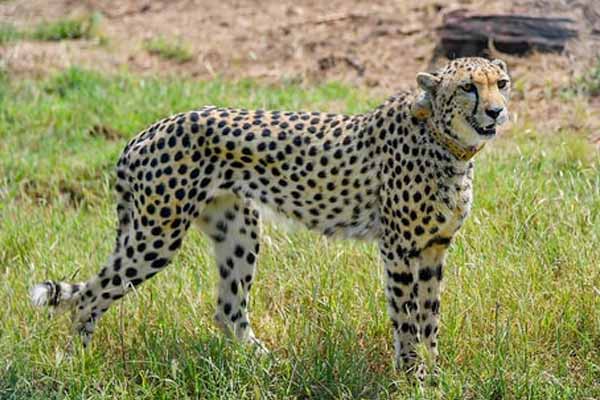Kuno National Park in Sheopur district of Madhya Pradesh in Central India. It lies in North-West of Madhya Pradesh close to state border with Rajasthan thus effect of Rajasthan vegetation can be experienced in the forest of Kuno. It is in news since last few years due to lion & Cheetah rehabilitation project which in underway and close to completion. Wildlife experts are continuously visiting this wildlife to study & analyze circumstances here for lions & cheetahs. So far Asiatic lions are present in Gir National Park only in India and Cheetah are not present in India. If experts will succeed in their effort then this Kuno Palpur wildlife sanctuary will register its name in Wildlife History of India.
Kuno-Palpur wildlife sanctuary is spread over an area of 344.686 km² is one of the most well preserved and protected areas of Madhya Pradesh. It is situated between 77º 7´ and 77º 26´ E longitudes and 25º 20´ and 25º 53´ N latitude in world map. The existing area of 344.686 km² was notified as a WLS as per Govt. of M.P. notification no. 15-8-79-X-2 dated 16.01.1981. The WLS has its headquarters at Sheopur, which is the district headquarters. The sanctuary has a vast richness and diversity of indigenous flora and fauna which represents a typical cross-section of the dry deciduous forest of the Central India.

Let’s know about the return of Cheetahs to India:
- Tomorrow, on September 17, eight cheetahs brought from Namibia will be released in Kuno National Park in Madhya Pradesh by Prime Minister Narendra Modi on his birthday.
- Yesterday, on September 15, a customised B747 passenger Jumbo Jet landed in Windhoek, the capital of Namibia to bring the big cats to India.
- The plane, which is painted with the face of a big cat, will take off from Hosea Kutako International Airport, Windhoek and fly directly to India without a halt to refuelling, which has been measured for the health of the animals.
- The aircraft, which will be carrying the eight cheetahs from Namibia, has been modified with spaces in the cabin to fit cages for the animals and will allow vets to have full access to the big cats during the flight. The aircraft has been sourced by Action Aviation, which is a large aircraft brokerage company.
- The animals were first planned to arrive in Jaipur and then sent to Kuno Palpur National Park by helicopter, but as per recent news, they will be arriving in Gwalior on Saturday, 17th September.
History of Kuno National Park
Kuno National Park, Kuno Species Division and the surrounding area have historically been densely populated with wildlife. This location was also known to have a dense forest in ancient times. In 1564, Mughal Emperor Akbar captured a large herd of elephants in the woodlands near Shivpuri while returning from Malwa, according to one of the gazettes of Gwalior princely state dated 1902. Lions were discovered in this region and the last lion in this region was shot near the city of Guna in the year 1872.
Madhavrao Scindia II, Maharaja of Gwalior, invited Lord Curzon to go hunting in 1904. Lord Curzon was so taken with the forest of Kuno Valley that he immediately suggested to the King that Lions be brought from Junaghad, Gir, and released in the forest India Wildlife Tour Package.
Scindia began working on it with the arrogance of a Maharaja, attempting to collaborate on his level with the Nawab of Junagadh. However, his initial efforts were futile. Even Lord Curzon attempted to assist by initiating meetings with the Nawab and personally becoming involved in the migration, but the Nawab continued to delay the project. Later, Lord Curzon presented the Maharaja with a letter written to the monarch of Abisinia (current Ethiopia), requesting that some lions be brought to Kuno from there.
Scindia tasked a Persian scholar named DM Zaal with overseeing this project, which was given a Rs 1 lakh budget in 1905. Zaal was able to bring ten lions from Africa with the help of the Maharaja of Gwalior. However, three of them died before reaching Bombay Harbour. Three of the seven surviving lions were males, while the remaining four were females, and they were personally welcomed by the Madavrao Scindia II.
Bunde, Baanke, and Majnu were the males, and Ramailee, Rampyari, Bijli, and Gaindi were the females. Instead of Kuno, these lions were later released into the Shivpuri Jungles. Unfortunately, these lions transformed into livestock lifters and man-eaters between 1910 and 1912, and the project failed as a result of these unfortunate circumstances. Though the King’s ambition of seeing lions flourish once more in this landscape did not come true as he had hoped, his efforts were brave and trailblazing, to say the least.
Kuno National Park Safari Booking Online
The park, which belongs to the Kuno Wildlife Division, is 748 square kilometers in size. Around the national park is a 500 square kilometer buffer zone. 2018 saw the transition of Kuno’s status from a wildlife sanctuary to the national park. The Wildlife Institute of India chose Kuno as the ideal site for India’s Cheetah reintroduction program, which has recently garnered attention (WII).
According to the idea, 12 to 14 cheetahs would be released into the National Park and tracked via satellite radio collars. The Indian Leopard, Sambar, Wild Boar, and Four-horned Antelope are among the many creatures that may be photographed in Kuno.
Best time to visit Kuno National Park
Though Kuno National Park is open throughout the year, it is closed during the monsoon season, i.e., from July 1 to October 15. Since the park is in tropical areas and according to its vegetation and geographical conditions, the best time to visit Kuno National Park is from October to March, with pleasant weather and a comfortable stay.
